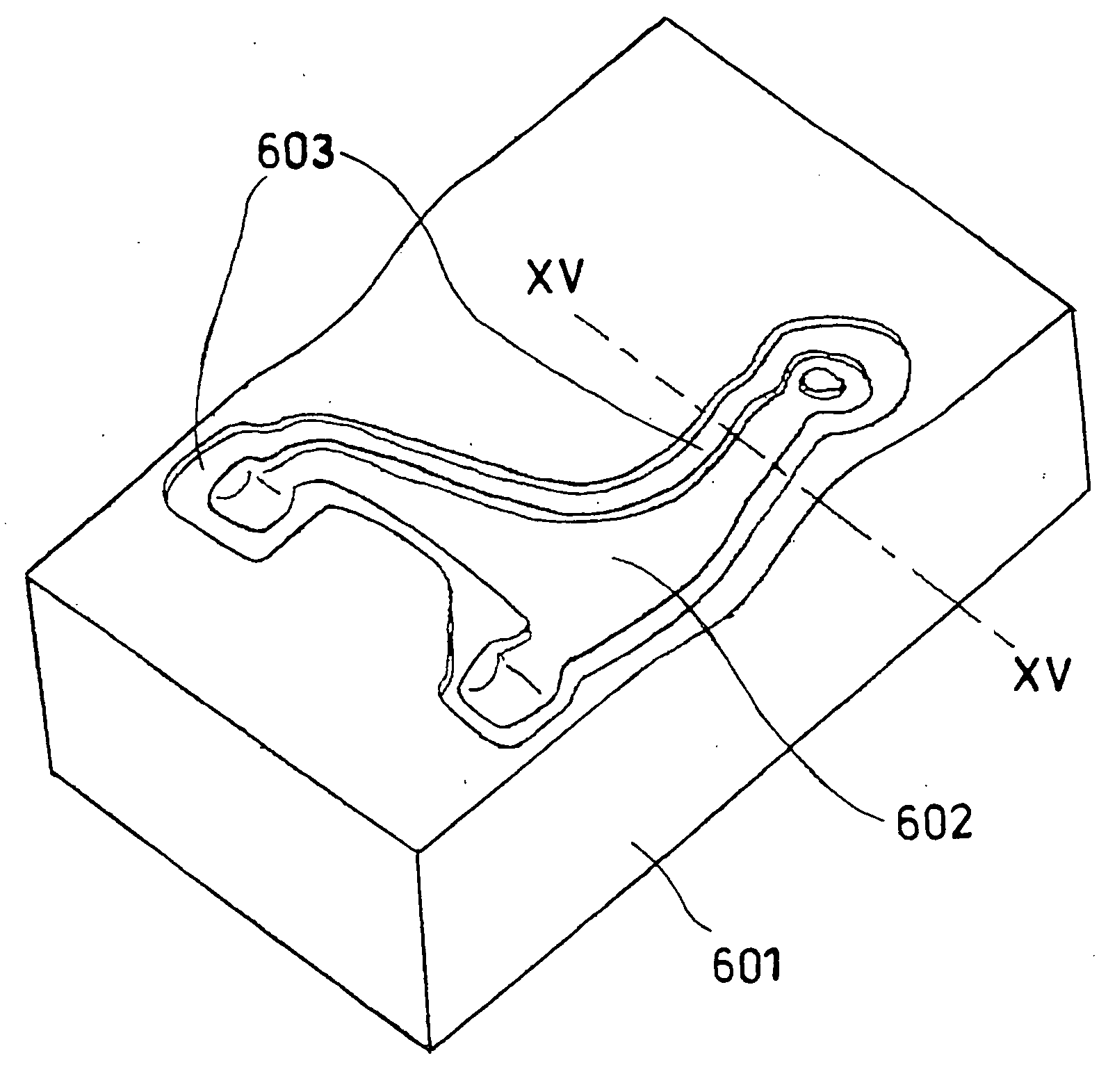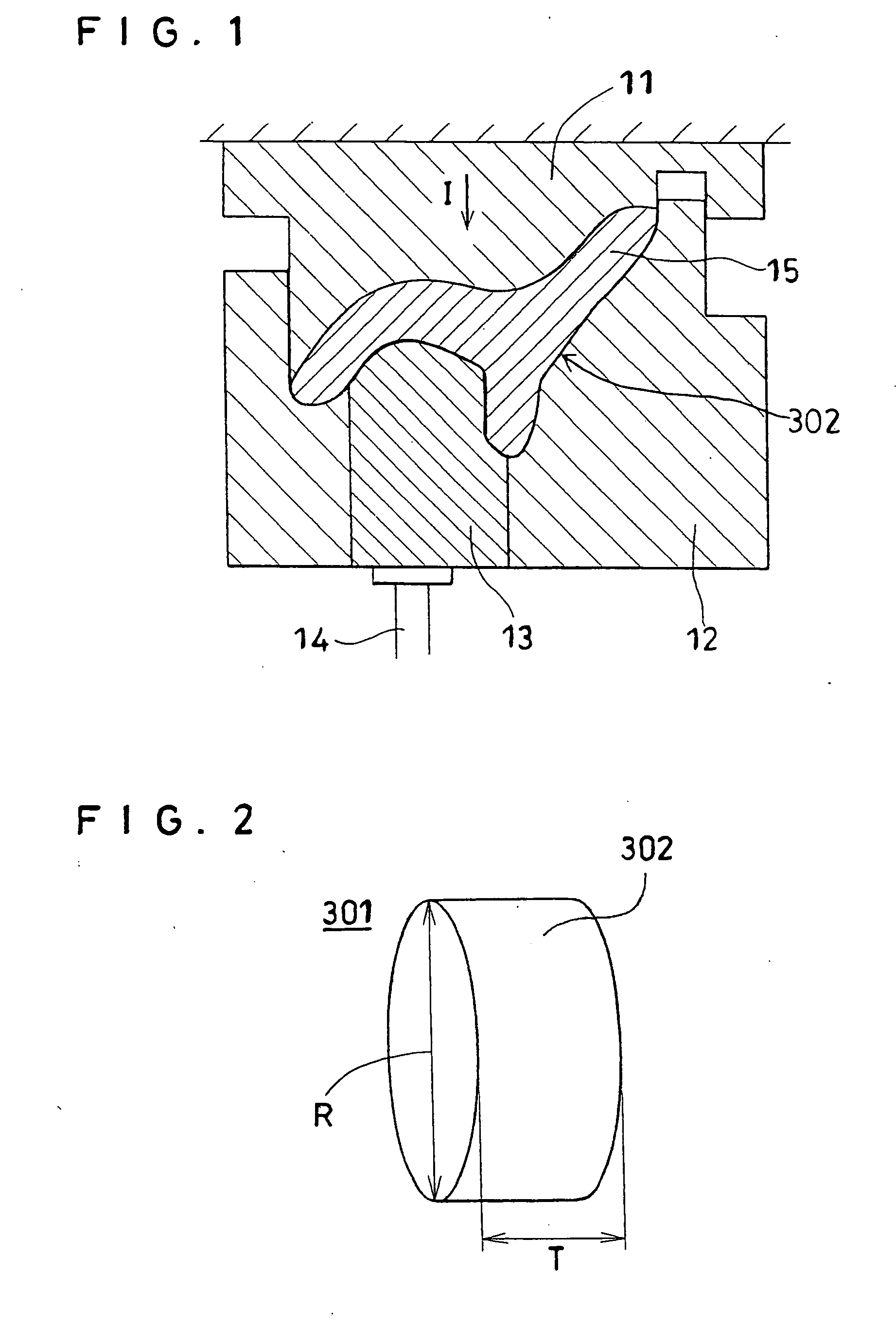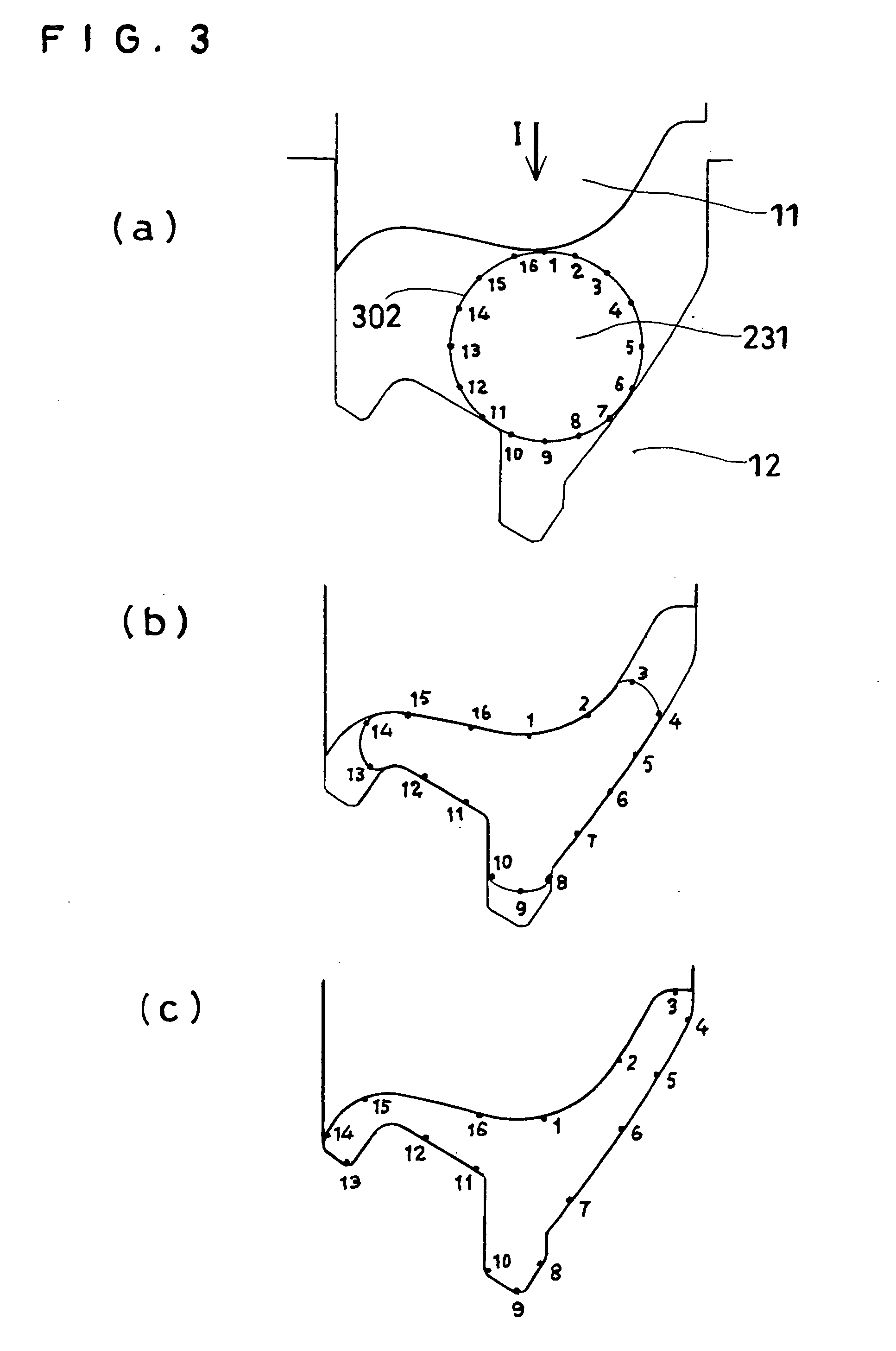Metal forged product, upper or lower arm, preform of the arm, production method for the metal forged product, forging die, and metal forged product production system
- Summary
- Abstract
- Description
- Claims
- Application Information
AI Technical Summary
Benefits of technology
Problems solved by technology
Method used
Image
Examples
example 1
[0204] In order to produce, through the preliminary forging step, a preform of an upper arm shown in FIG. 6(a), which is a suspension part for an automobile, a cut piece of JIS 6061 aluminum alloy (i.e., forging material) having the same volume as the preform was designed as follows.
[0205] The volume of the upper arm preform was calculated by means of a CAD system programmed in a computer. On the basis of the results of the calculation, the volume of a cut piece was designed to be 862 cm3. The volume tolerance of the cut piece was determined to be ±1% on the basis of the calculated volume of the preform.
[0206] Subsequently, the thickness of the cut piece was designed to be 28 mm, which is 0.95 times the lateral length (t) represented by reference letter J (shown in FIG. 16) of a projection profile of the preform, the projection profile being formed in a direction perpendicular to the direction of pressure application I shown in FIG. 1. On the basis of the volume and thickness of t...
example 2
[0221] In order to produce an upper arm shown in FIG. 18, which is a suspension part for a vehicle, a forging preform shown in FIG. 19 of the upper arm was produced. A cut piece of JIS 6061 aluminum alloy (i.e., forging material) that had the same volume as the preform, was designed as follows.
[0222] The volume of the upper arm preform was calculated by means of a CAD system programmed in a computer. On the basis of the results of the calculation, the volume of a cut piece was designed to be 595 cm3. The volume tolerance of the cut piece was determined to be ±1% on the basis of the calculated volume of the preform.
[0223] Subsequently, the thickness of the cut piece was designed to be 30 mm, which is 0.95 times the lateral length (t) represented by reference letter N (shown in FIG. 21) of a projection profile of the preform, which profile is formed in a direction perpendicular to the direction of pressure application M shown in FIG. 20. On the basis of the volume and thickness of t...
example 3
[0232] Forging was performed under the same forging conditions as those employed in Example 1, except that the aluminum alloy species serving as a forging material was changed as described below.
[0233] In order to produce, through forging, a preform of an upper arm shown in FIG. 6(a), which is a suspension part for an automobile, there was employed, as a forging material, a cut piece of a continuously cast round bar of SU 610 aluminum alloy (Mg: 0.8 to 1.2 wt. %, Si: 0.7 to 1.0 wt. %, Cu: 0.3 to 0.6 wt. %, Cr: 0.14 to 0.3 wt. %, Mn: 0.14 to 0.3 wt. %, and Al and impurities: balance), the cut piece having the same volume as the preform.
[0234] The yield by weight of the preform on the basis of the forging material was found to be about 99%.
[0235] The surface layer of the forging material observed was distributed throughout a circumferential surface 62 of the preform, and parallel surfaces 63 of the preform were found not to have the surface layer. The cross sections of three branch...
PUM
| Property | Measurement | Unit |
|---|---|---|
| Thickness | aaaaa | aaaaa |
| Thickness | aaaaa | aaaaa |
| Flow rate | aaaaa | aaaaa |
Abstract
Description
Claims
Application Information
 Login to View More
Login to View More - Generate Ideas
- Intellectual Property
- Life Sciences
- Materials
- Tech Scout
- Unparalleled Data Quality
- Higher Quality Content
- 60% Fewer Hallucinations
Browse by: Latest US Patents, China's latest patents, Technical Efficacy Thesaurus, Application Domain, Technology Topic, Popular Technical Reports.
© 2025 PatSnap. All rights reserved.Legal|Privacy policy|Modern Slavery Act Transparency Statement|Sitemap|About US| Contact US: help@patsnap.com



